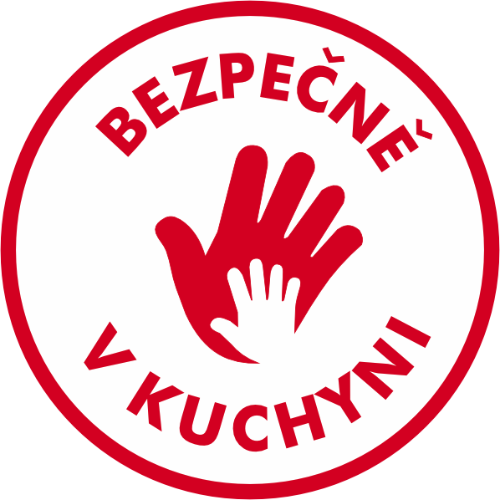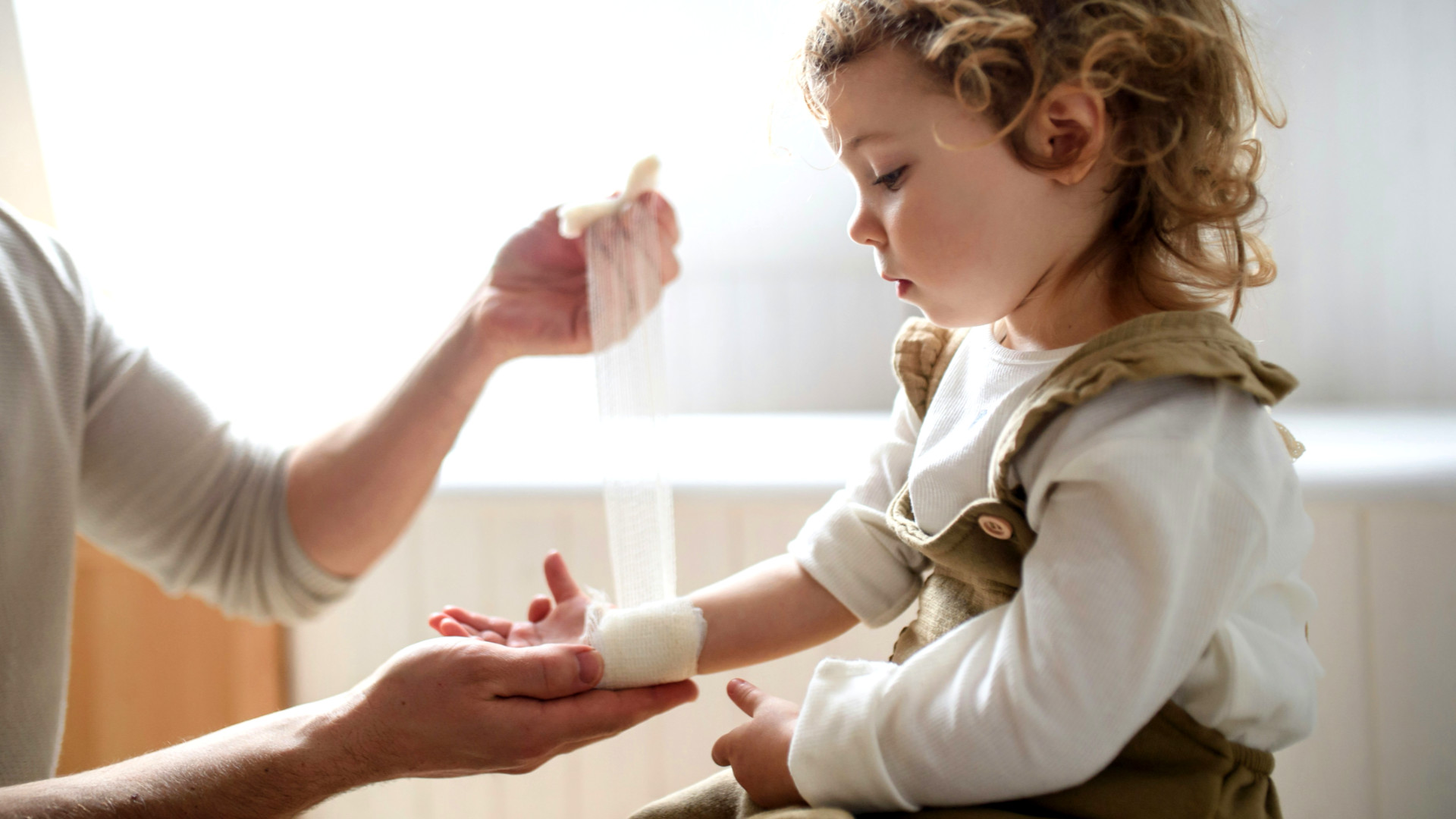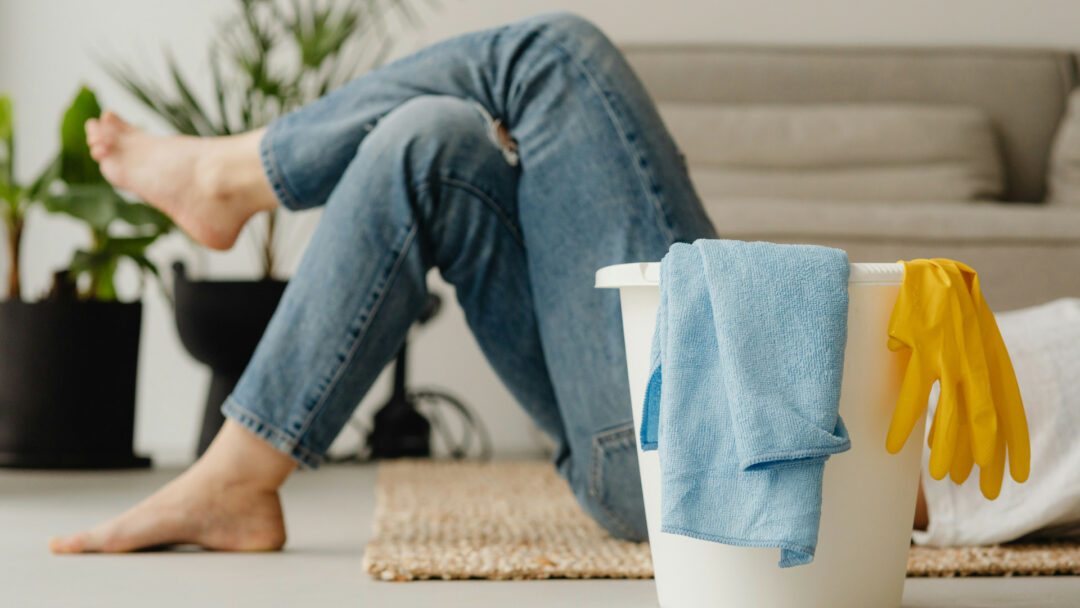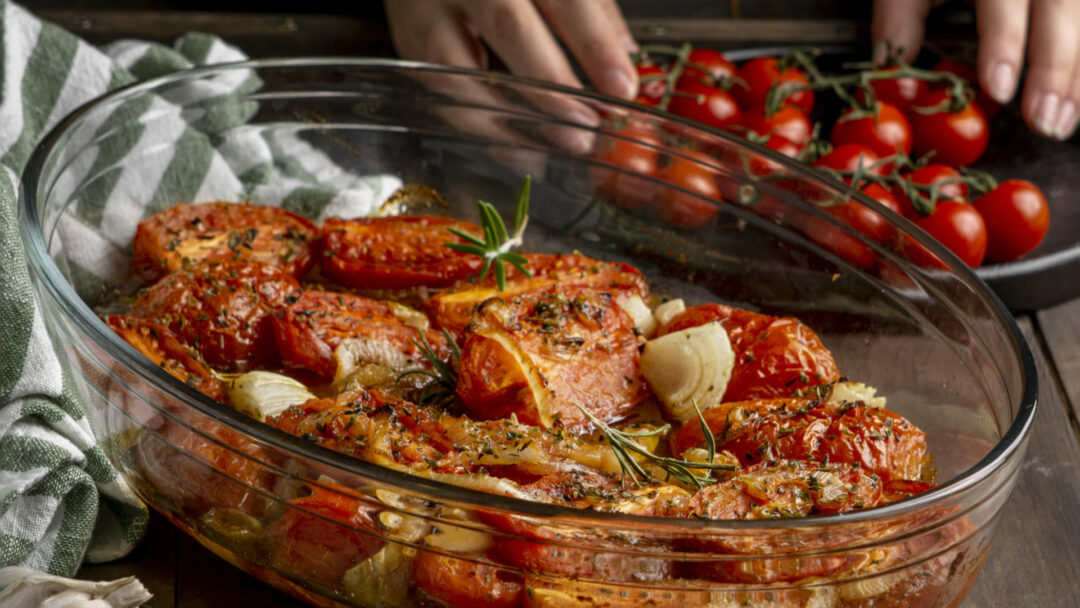First-degree burns affect only the outer layer of the skin (epidermis). Typical symptoms include redness, mild swelling, and pain. Such burns often occur from brief contact with hot objects or the sun. Proper first aid:
- Cool the burned area with cold running water for 10-20 minutes.
- Apply moisturizing cream or aloe vera to relieve pain and promote healing.
- Cover the burn with a clean, dry bandage.
Second-degree burns penetrate deeper layers of the skin (dermis). They manifest with blisters, intense pain, and oozing. Second-degree burns should be directed to professional treatment, to a doctor! Proper first aid:
- For burns the size of an adult’s palm, cool the affected area with cold water.
- Immediately remove all rings, chains, and anything that could cause tissue compression as swelling develops.
- Do not break or puncture blisters, as they can protect against infection.
- Cover the burn with a sterile bandage without adhesive materials.
- If the burn is extensive or located in a sensitive area, seek medical help immediately.
- For circumferential burns, those that encircle an entire finger, palm, foot, or occur on the neck, seek medical help immediately! There is a risk of swelling development and damage to internal tissues or compression of blood vessels or airways.
Third-degree burns affect all layers of the skin and can damage subcutaneous tissues. The skin may be white, charred, or blackened, and the affected area will likely be numb due to nerve damage. Proper first aid:
- Do not attempt to cool the burn with water to avoid hypothermia.
- Immediately remove all rings, chains, and anything that could cause tissue compression as swelling develops. Remove clothing, but do not tear off adhered parts.
- Cover the burn with a sterile bandage or a clean cloth.
- Keep the affected person warm and calm. You can use a thermal blanket, for example.
- Call emergency services immediately.
Proper and prompt first aid can significantly contribute to minimizing damage and speeding up the healing process.
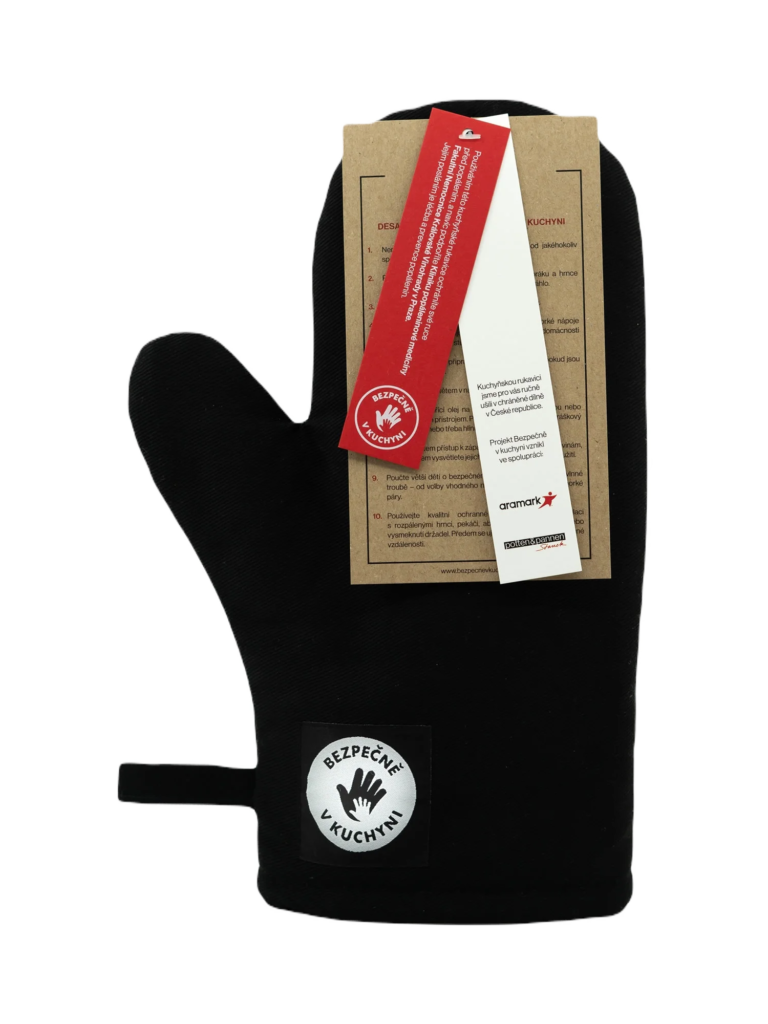
Buy a charity potholder and support a good cause
By using this kitchen glove, you will protect your hands from burns and you will also support the Burn Medicine Clinic of the Královské Vinohrady University Hospital in Prague. Its mission is the treatment and prevention of burns.
